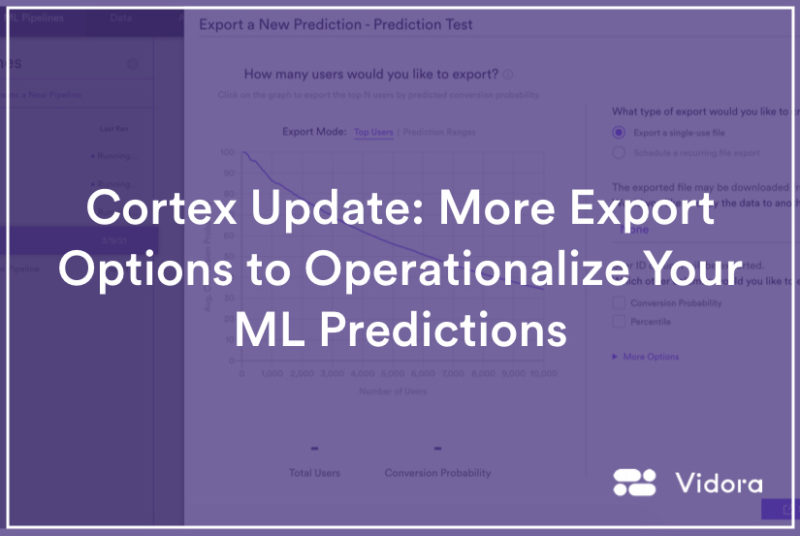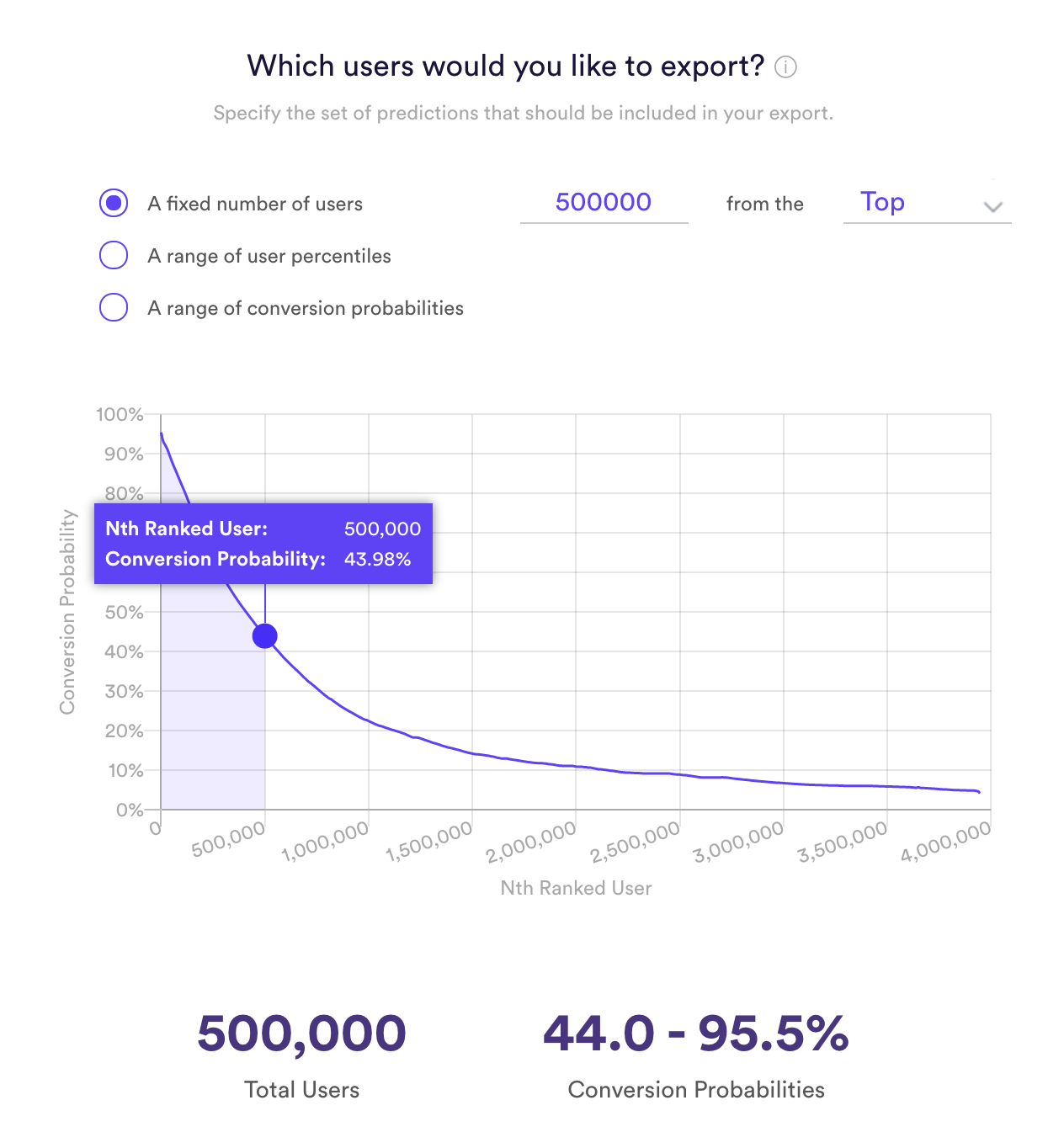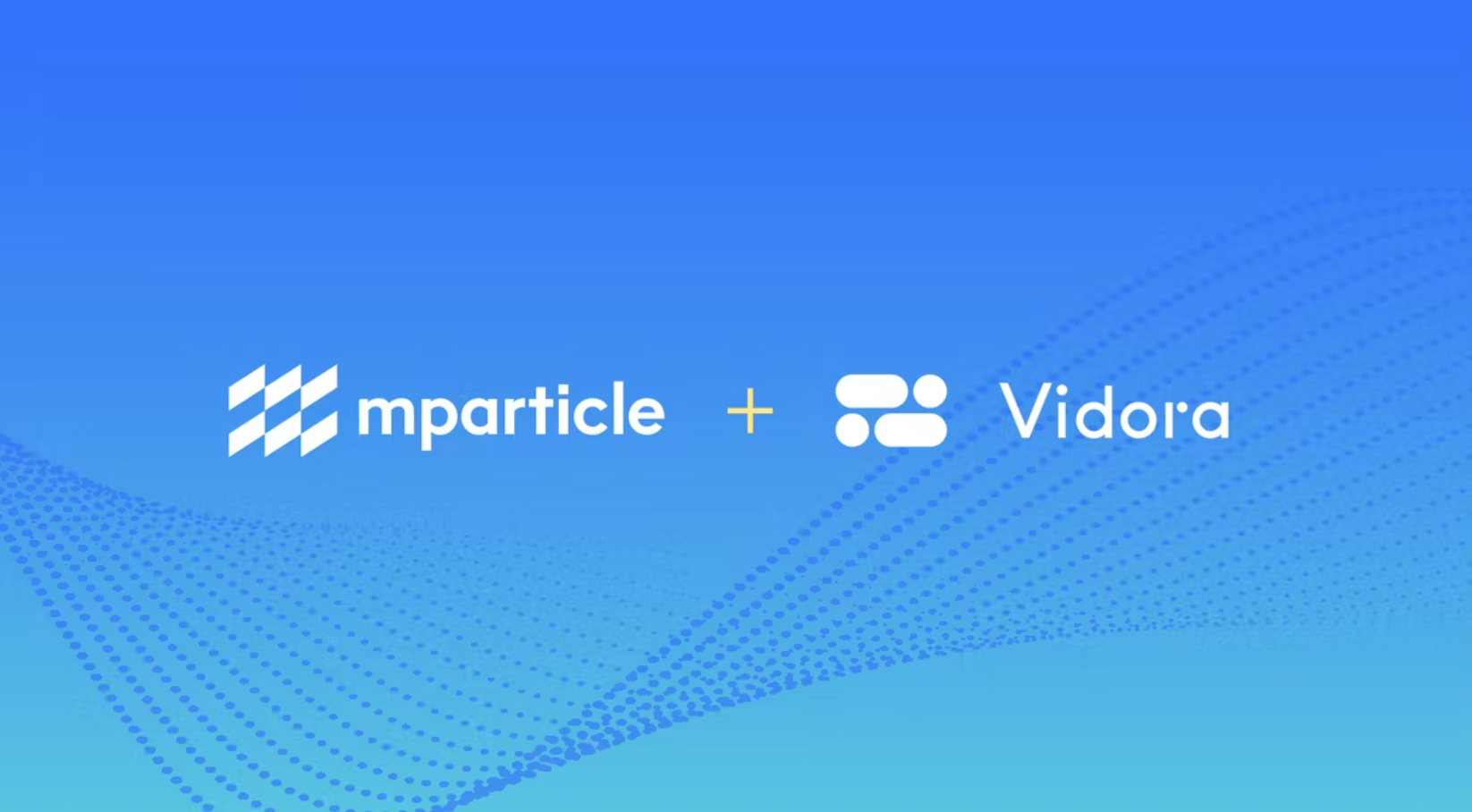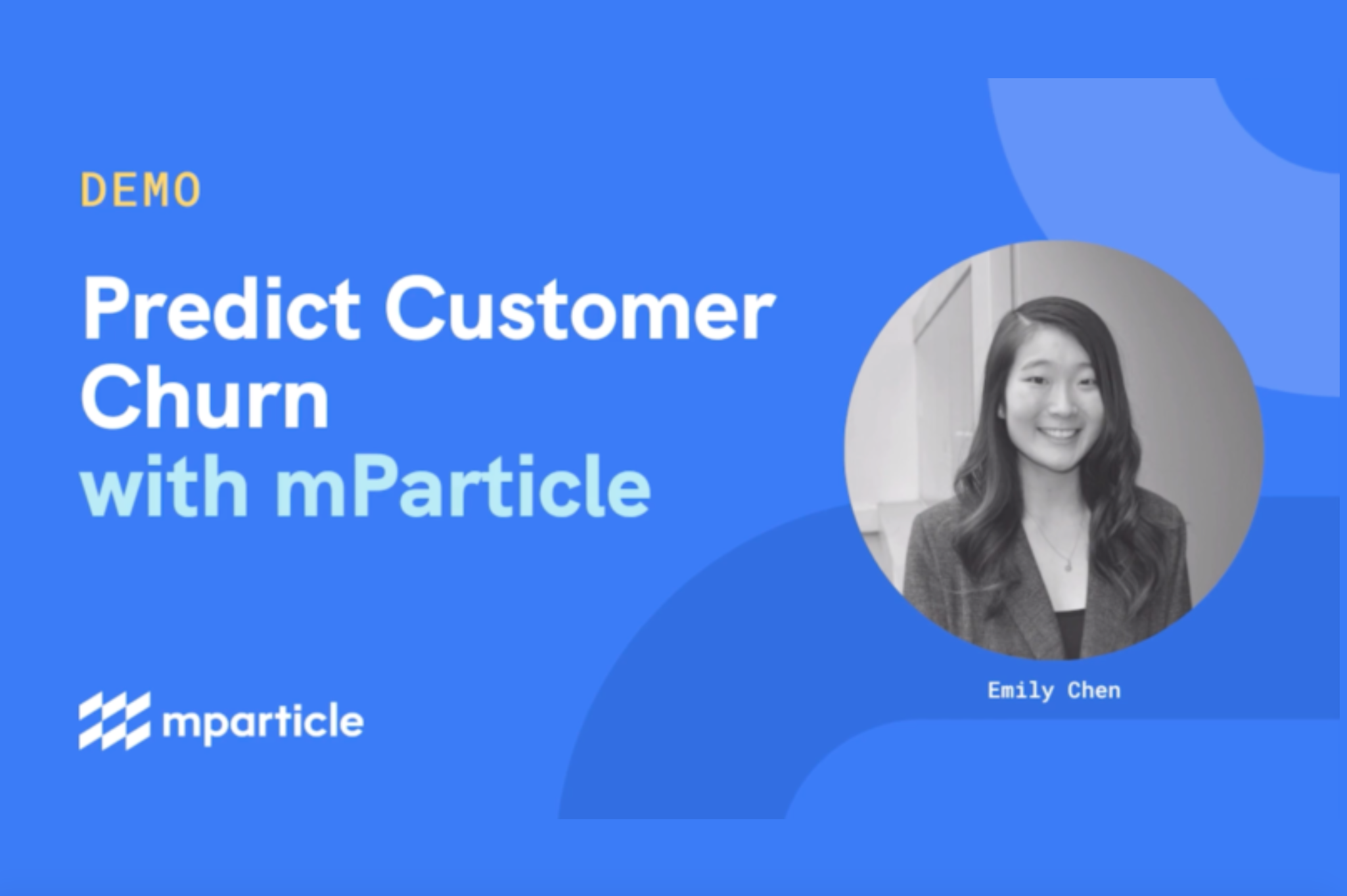
Operationalizing your predictions is often the hardest part of Machine Learning. Even as more and more companies adopt ML, many are limited to analyzing a few static models. At Vidora, we’ve seen that the path to realizing the most value from ML is through a continuous and self-learning system which automates ongoing tasks for your business. It’s why we have low-latency APIs for deploying predictions live onsite. It’s why we built integrations with Segment, Salesforce, Amazon, Zephr, and others. And it’s why we just launched a new set of prediction exporting options in Cortex.
In order to bring ML projects to production, you need flexibility in how you access the outputs. Our latest release provides that flexibility, making it even easier to export the right customers segments to the right places on the right schedule. This means that you’re closer than ever to making operational ML a reality for your business.
ML-Based Segmentation
Vidora Cortex makes it easy to automate ML predictions for common product and marketing use cases. In just a few clicks, teams can make predictions about future user behavior, user attributes, next best action, personalized recommendations, and more.
Cortex handles all the technical and time-consuming parts of ML, like data wrangling, model selection, and prediction generation. Your job as the business expert is figuring out the most effective way to put those predictions to use. And since the answer might be unique to your business and goals, you need flexibility rather than prescribed strategies.
For example, a common use case for our partners is to predict each customer’s probability of churn in order to launch a weekly winback campaign targeted toward at-risk users. This use case usually starts with a churn prediction and ends with a targeted email, but different organizations define “at-risk” users in different ways –
- Company #1 might only have the budget to email 1m customers each week, so they’ll target the top 1m users that are predicted as most at-risk of churn.
- Company #2 might have knowledge that their most dormant users never come back, so instead they target a more persuadable set of customers whose predicted churn risk falls in the 50-90th percentile.
- Company #3 might have fewer budget constraints, and so they may target any customer with a >70% chance of churn, regardless of how many customers fall into that cohort on any given week.
Cortex’s new prediction export filters allow for all of these strategies and more. You can choose from one of 3 available export modes in order to define ML-based user segments. Each mode includes a visualization that you can use to help inform your selection.
- A Fixed Number of Users: Enter the number of users that you’d like to export, and specify whether to pull from the top or bottom of the predictions list (e.g. “top 1m users”).
- A Range of User Percentiles: Enter a range of user percentiles in order to export a fixed percentage of users (e.g. “users in the 90-100th percentile”).
- A Range of Predictions: Enter a range of predictions that you’d like to export (e.g. “users with conversion probability between 0-20%”).
Need a segment based on custom logic? Cortex supports that too. If you can define it using SQL, you can create it in Cortex.
 Putting Your Segments to Work
Putting Your Segments to Work
Once you’ve defined a segment, Cortex makes it easy to deliver those users to a custom destination so they fit seamlessly into your business’s automated workflows. At Vidora, we’ve seen too often that business teams are slowed by the engineering work required to connect various technology platforms into a single system. That’s why we’re integrated with several other platforms in the enterprise data ecosystem — including Segment, Salesforce, Google Cloud, AWS, and more. In a few clicks, you can schedule a recurring export (daily, weekly, monthly, etc.) which automatically (a) updates your segment with fresh predictions, and (b) sends the new list to your chosen destination. This means that instead of waiting for your engineering team to shuffle data from one place to the next, you can get to work operationalizing ML right away.
Want to Learn More?
Our experience with Fortune 500 partners has taught us that the key to maximizing value from ML is operationalizing your predictions — that is, building a system where up-to-date predictions automatically flow through your business to automate an ongoing task. We’ve built Cortex to help make this process of operationalizing machine learning as painless as possible, and our latest release is another big step toward that goal.
Interested in learning more? Drop us a line at info@vidora.com to see a demo!


